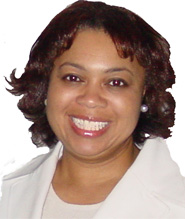




 The March 20-28, 2014 educational and cultural journey began in the beautiful island city of Montego Bay, Jamaica.
The March 20-28, 2014 educational and cultural journey began in the beautiful island city of Montego Bay, Jamaica.
Twelve travelers and 9 excited golfers had flown in from the U.S. All travelers were seeking to experience the wondrous land of Cuba. The island, that for so long, was know as a ‘forbidden’ destination for U.S. visitors.
The voyage would entail 8 glorious days, 7 charming nights aboard the luxurious Cuba Cristal cruise ship, sailing warm, calm, Caribbean waters with extraordinary vistas.
A delightful cruising speed of 18 knots, along with an array of on board amenities and comforts of the upscale vessel included spacious staterooms and suites, elegant lounges, restaurants, internet corner and open promenades.
Golf at Varadero Golf
Located just 2-hours outside of Havana, a deluxe shuttle van carried golfers, bags and clubs on a marvelous journey with exceptional landscape views. An on board tour guide highlighted features along and way and familiarized guests on local Cuban customs, Afro-Cuban religions, native flora and fauna, industries, and other great information. Varadero Golf Course, the first 18 hole Golf Course in Cuba, was designed by architect Les Furber. Once at the course, the 18 hole, 72 par did not disappoint with its 6269 yards.
It was a magnification round of play in 80 degree, slightly breezy weather. Varadero has a terrific pro shop stocked full of name brand, signature ball with everything from gloves to clothing and accessories and more. You can pick up whatever item you need to enhance your play. The staff was very friendly and easy to understand. There was no communication barrier….but, golf is almost a universal language, anyway.
Land tours on the trip took travelers to the colonial village of Cienfuegos and Trinidad, beach ‘hip’ barbecue in the sunshine at Punta Frances on the Isle of Youth, a live burlesque dinner show at the famous Tropicana outdoor night club, a stunning countryside visit to Holguin, and a final stop in Santiago De Cuba, the second largest city in Cuba, home of legendary run, exotic fruits, sugar, rum, tobacco, and cigars, the most important urban area outside of Havana. Meals, activities and entertainment were all exquisite. Highlights included tours of Castro’s childhood home, open-air restaurants, a city parade celebration, cigar factory and the excitement of riding in vintage automobiles from the 50’s and 60’s.
About Cuba:
Circumnavigating the only island country in the Caribbean, Cuba is the largest of the West Indies group (equal in area to Pennsylvania). Arawak (or Taino) Indians inhabited Cuba when Columbus landed there in 1492, many died from diseases brought by sailors and settlers. Havana’s superb harbor made it a common transit point to and from Spain. In the early 1800s, Cuba’s sugarcane industry boomed, requiring massive numbers of black slaves until slavery was abolished in 1886. Most people today remember Cuba during 1956, when Fidel Castro Ruz launched a revolution from his camp in the Sierra Maestra Mountains.
The U.S. ended military aid to Cuba in 1958. In 1961, a U.S.-backed group of Cuban exiles invaded Cuba. Planned during the Eisenhower administration, the invasion was given the go-ahead by President John Kennedy, although he refused to give U.S. air support. The landing at the Bay of Pigs (April 17, 1961) was a humiliation. The invaders did not receive popular Cuban support and were easily repulsed by the Cuban military. The Cuban Missile Crisis of 1962 resulted from a Soviet attempt to install medium-range missiles in Cuba—capable of striking targets in the United States with nuclear warheads. President Kennedy promised a U.S. blockade of Cuba to stop the missile delivery. Six days later, Soviet premier Nikita Khrushchev ordered the missile sites dismantled and returned to the USSR in return for a U.S. pledge not to attack Cuba. Russian aid, which had long supported Cuba’s failing economy, ended when Communism collapsed in Eastern Europe in 1990. Cuba’s foreign trade also plummeted, producing a severe economic crisis.
In 1993, Castro permitted limited private enterprise, allowed Cubans to possess convertible currencies, and encouraged foreign investment in its tourism industry. The Bush administration again tightened its embargo in June 2004, allowing Cuban Americans to return to the island only once every three years (instead of every year) and restricting the amount of U.S. cash that can be spent there to $50 per day. In response, Cuba banned the use of dollars, which had been legal currency in the country for more than a decade. In Feb. 2008, Fidel Castro ended 49 years of power when he announced his retirement. The 81-year-old, who ruled Cuba since leading a revolution in 1959, said he would not accept another term as president. Raúl Castro succeeded his brother, becoming the 21st president of Cuba on Feb. 24, 2008.
LITTLE KNOWN FACT: It is estimated that almost 400,000 Africans were brought to Cuba during the years 1835-1864. (That’s roughly 1150 per month for 29 years!) As early as 1532, the blacks formed 62.5 percent of the population. In 1841, African slaves made up over 40% of the total population. In addition, it is estimated that from 1913 to 1927 40,000 blacks a year were smuggled in.
 Debert Cook is a travel writer and avid golfer based in New York City.
Debert Cook is a travel writer and avid golfer based in New York City.


